The Jacksonville Cemetery, Oregon

–
Yesterday, I noted that I was freaked out because the Touvelle House was right next to the Jacksonville Cemetery, and the risk of encountering zombies was therefore very high.
I hope you all realize that I was joking. I am well aware of how ridiculous a statement like that sounds. We all know that if a zombie apocalypse does occur, it will be because of some strange, mad-made virus that will spread quickly and indiscriminately – like lice through a kindergarten class. It will have no impact on the dead (who will be envied for having been spared the plight), but it will turn the living into mindless, cannibalistic monsters.
Obviously.
But there’s no way the virus could somehow bring the deceased back to life. That’s crazy talk.
And so, despite my all-consuming fear of zombies, I have no problem with cemeteries. I actually quite enjoy them. I find them peaceful and quiet, and really nothing to be afraid of. It’s something I got from my mom. She’s always been fond of graveyards, even when she was a little girl.
As she often says, “What could possibly hurt you in cemetery?”
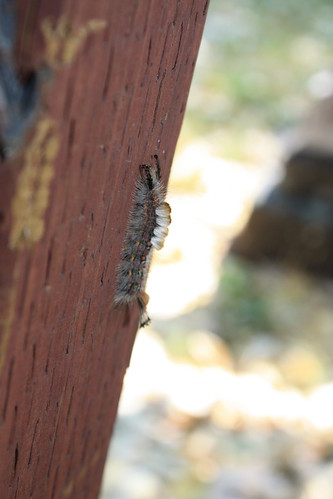
Certainly not this wittle fuzzy wuzzy caterpillar.
–
Though the entrance to the cemetery was right next door to our B&B, we had to walk uphill to get there.
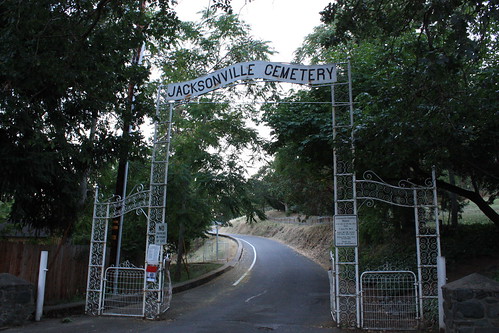
–
This view, looking down, doesn’t make it seem all that bad. But let me tell you: this gentle slope, in the summer heat, whooped my butt.
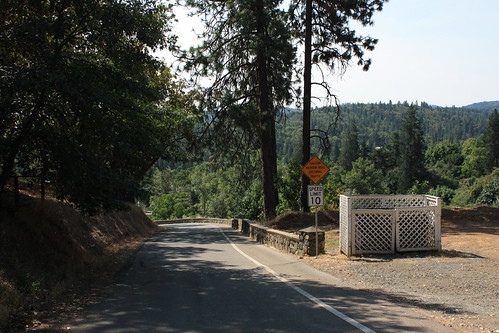
Looking back down from whence we came. I swear, it was much steeper at the time. REALLY.
–
Up at the top it was, forgive my pun, dead still. A hot breeze would blow through the weeds every now and then, and cicadas would occasionally buzz.

–
The quiet was both peaceful and oppressive.
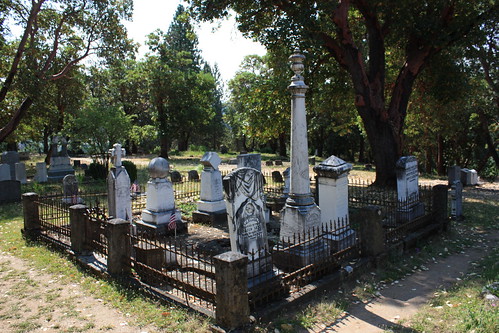
–
The first official burying in Jacksonville Cemetery happened back in 1859, so while it’s a great deal newer than some of the graveyards we’ve visited back east, it remains one of the oldest cemeteries in Oregon. Many people first came out west in the 1850s during the Gold Rush, and there are quite a number of pioneers buried in the cemetery. It remains a functional, as well – some of the tombstones were from this year.
The older graves mark a world clearly different from the one we now live in. It’s hard to imagine a woman today having her husband’s first and last name on her tombstone, and just her own first initial.
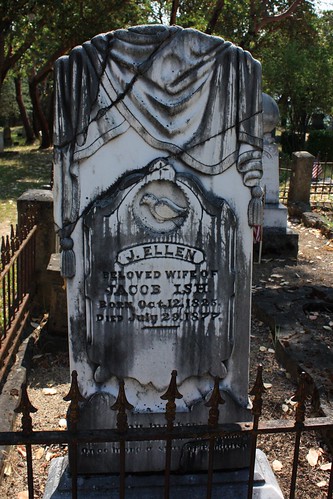
–
It seems that Jacob outlived her, though, so she might not have had a say in the matter.

–
Many of the graves we saw were for children.
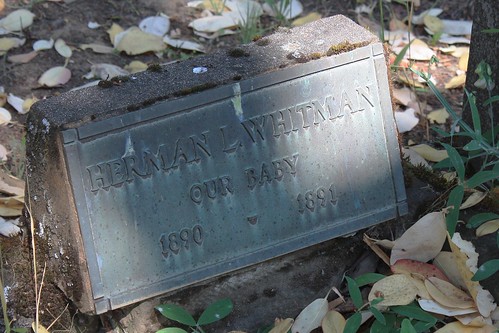
This one was heartbreaking.
–
Some of them died on the same day of their birth, before they were even named.

–
A few of the tombstones are even older than 1859. They comprise a handful of graves from around the area that were moved (along with the remains) to Jacksonville Cemetery after it opened.
Rand and I were fascinated by this one. It reads, “Silas J. Day, Pioneer of 1852. Indian War Veteran.”
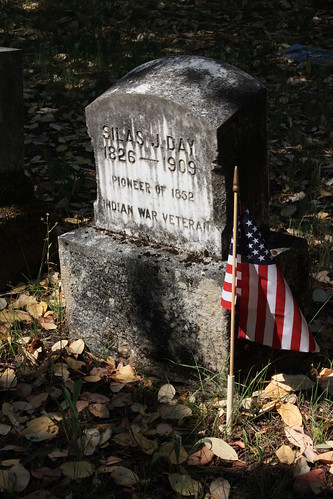
–
The vagueness of that last phrase caught our attention. We had no idea what “The Indian War” referred to. Apparently it could have been any number of battles that happened between Native American peoples and settlers before and after the Revolutionary War (based on Silas’ date of birth, the war that he fought in must have been after). Given his geographic location, Silas likely fought in the Rogue River War which was … well, kind of ridiculously heinous. Native Americans were slaughtered in hopes of inciting them into a war … so that out-of-work pioneers could find employment as soldiers.
Yup. They started a war against Native Americans because they were OUT OF WORK AND NEEDED A PAYCHECK.
It’s strange to see something like that imprinted on a grave. 150 years after the fact, it doesn’t seem like something you’d want to brag about. But history, I suppose, is all about context. There are no doubt headstones being erected now that will shock or confuse people in another century and a half.

–
The older parts of the cemetery are divided into large sections based on religion or affiliation. The Catholics are right up against the Jews (“Just like you and me!” I told my husband), and they both border a group called the German Order of Redmen (you can see the entire layout online, but be warned: it’s a PDF). The areas are denoted with signs.
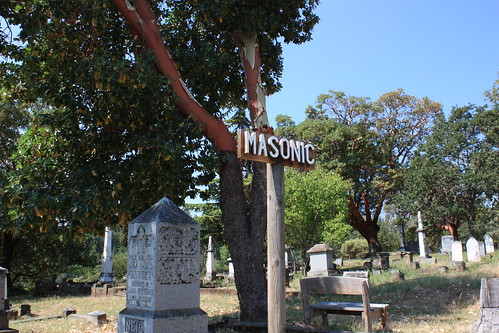
–
There’s an area of the cemetery called Potter’s Field that I would have liked to have visited, but didn’t learn about until after we got home. Apparently Potter’s Field is where you were buried if you couldn’t afford a gravesite or, because of your ethnicity or race, were prohibited from buying one.
To recap: if you were poor or not white, you weren’t allowed to mingle with the upper crust, even in death. Damn. That’s some serious segregation.

–
And in the end, it’s downright absurd. We’re all the same, and we all end up the same. All the stuff that can hurt and harm us is up above ground (except for carniverous mole people). I wonder if that’s why my mom likes cemeteries so much. Because they’re peaceful. Because they put everyone on even footing. Because despite the differences and hate that plagued us in the waking world, we all end up together.
And as we walked back down to town, I thought back to what she always says.
“What could possibly hurt you in a cemetery?”
Nothing. Really, nothing at all.

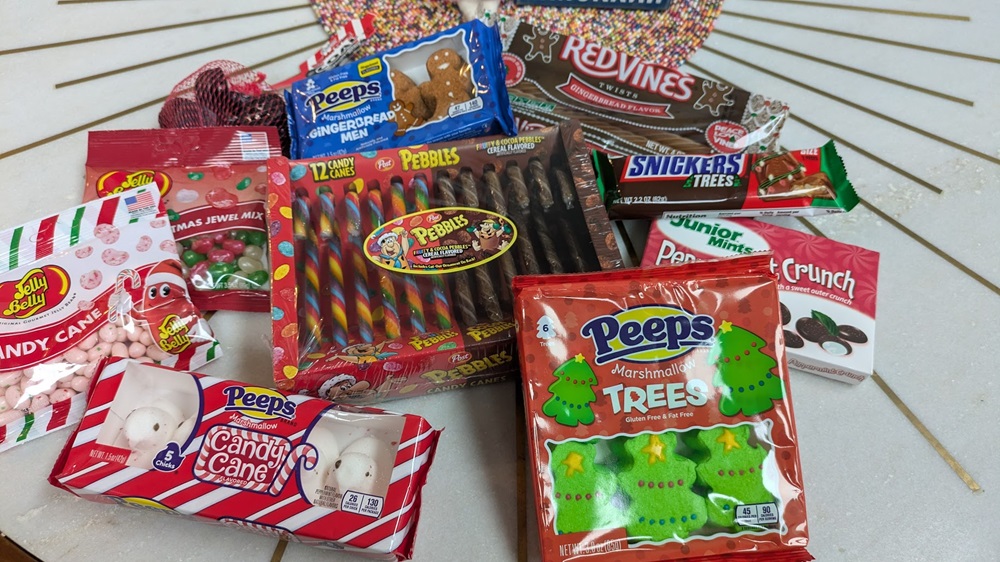
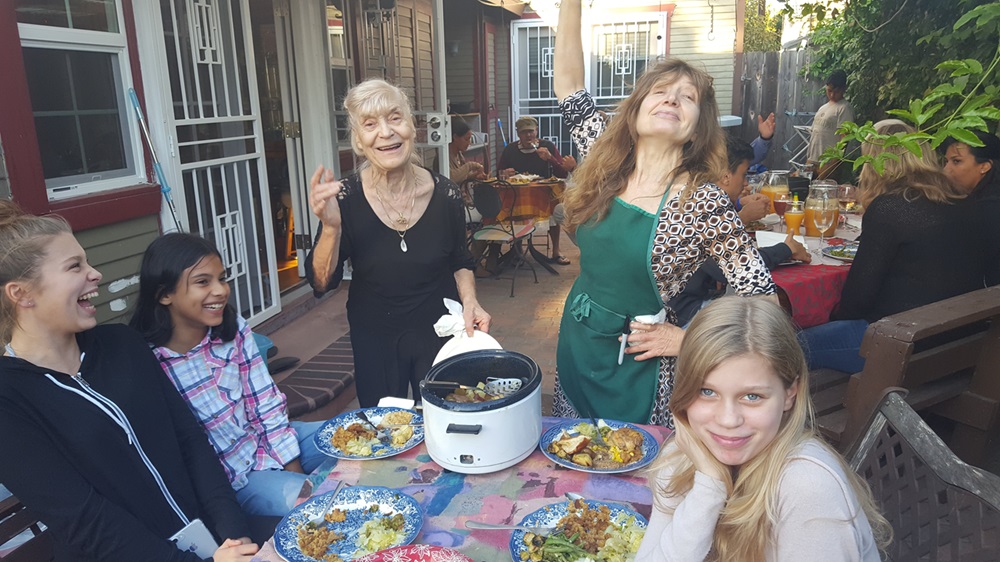

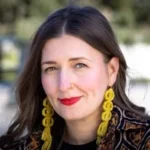

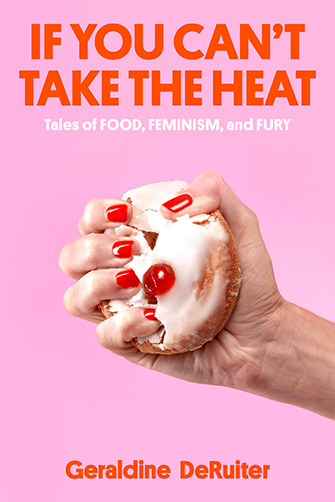



Leave a Comment